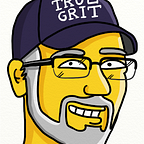Brenden, I find this approach to myth unhelpful. First of all, “myth” seems to be used for anything that you believe in. So why not just call it “belief”? This confusion leads to statements like this pull quote from Gabriel: “Whereas fire is sacred for the Brahmans, the scientific approach is sacred in secular modernity”. So, a metaphor wherein science is like fire, and all of modern non-religious culture is like a religion’s priestly class. This means something? The word “sacred”, too, is stretched beyond its usual meaning, perhaps (I’m just saying here) to make a meaningless utterance sound profound.
So, one can argue that not all beliefs are myths. The usual meaning of myth is the one Gabriel discounted: myth as “uncorroborated legend”. I would also say it’s the result of numerous people applying cognitive biases over a long time to make up a(n uncorroborated) story about the natural world.
You said that we should have our beliefs but doubt them, too. I think there must be some missing guidance there. Some beliefs are way more useful, and more grounded in reality, than others. For actual myths, I can see enjoying artistic works based on them, and yes, using them to help interpret our emotions, or as metaphors to communicate some things. But I don’t think my unconscious contains a roiling stew of myths, and if it does, I am really glad that I have other means of looking for truth.
It is now possible to have instant myths: made up, for example, to demonize huge swaths of society, or for other basically evil purposes. Like the malignant movement that begins with “q” (I will not name it) that has metastasized all over the world. I think that every past massively destructive movement, any hegemonizing swarm, has had its myth to bolster its followers. We should be wary, not sentimental, about myth-making.
